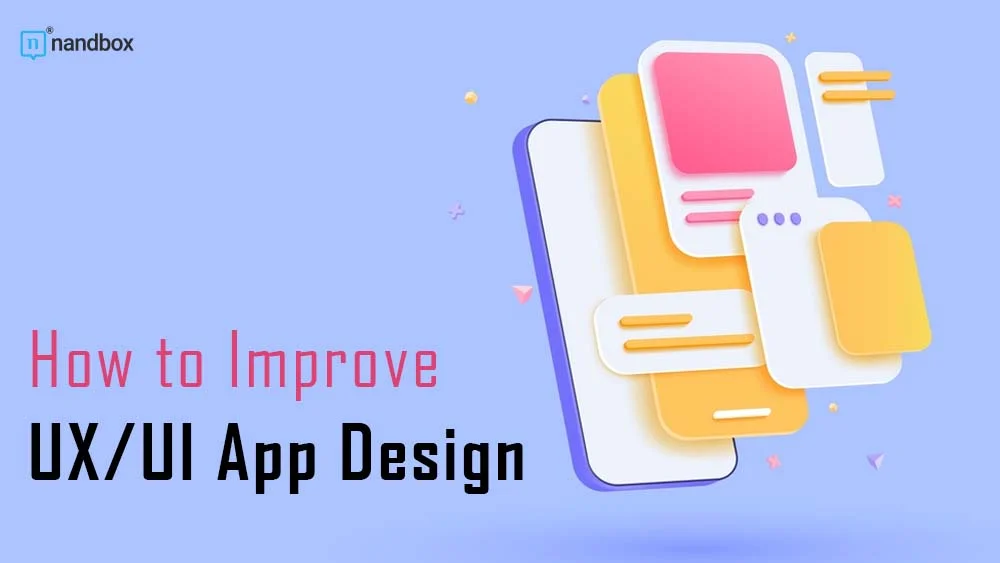Introduction
Welcome to our comprehensive guide, meticulously crafted by the experts at the digital design agency Fivecube, on enhancing the UX/UI app design. In this introduction, we’ll embark on a journey into the intricate world of user experience (UX) and user interface (UI) design, areas in which Fivecube has established its expertise. This guide is designed to provide you with valuable insights and practical tips to elevate the design of your digital applications.
Definition of UX/UI Design
UX/UI app Design encompasses the creation of comprehensive digital environments that are not only visually appealing but also intuitively navigable. UX refers to the overall experience users have with your app, including its usability and functionality, while UI focuses on the app’s visual and interactive elements.
Importance of Effective UX/UI in Mobile Applications
In the competitive landscape of mobile applications, effective UX/UI design is crucial. It’s the difference between an app that engages and retains users and one that is quickly abandoned. Good design enhances user satisfaction, boosts usability, and ensures that your app meets its intended purpose effectively.
Understanding Your Audience
In the realm of app development, understanding your audience is paramount. This section delves into the techniques for gaining insights into your users, crucial for tailoring your UX/UI design effectively.
User Research and Personas
User research is the foundation of user-centered design. It involves gathering data about your target users’ behaviors, needs, and motivations. Creating user personas, which are fictional characters based on your research, helps in visualizing the ideal user, guiding your design decisions towards meeting their specific needs.
Analyzing User Feedback
User feedback is a goldmine of insights. Regularly collecting and analyzing feedback from your users can reveal pain points, preferences, and usage patterns. This information is invaluable in refining your app to better serve your audience.
Principles of Effective UX/UI Design
Effective UX/UI design is the backbone of any successful app. This section covers fundamental principles that guide designers in creating user-friendly and appealing applications.
Simplicity and Clarity
The cornerstone of good design is simplicity. A clean, uncluttered interface with clear call-to-action elements enables users to navigate your app effortlessly. Clarity in design helps in communicating function and reducing user confusion.
Consistency in Design
Consistency in design elements like colors, fonts, and layouts creates a sense of familiarity and professionalism. Utilizing design systems can further streamline this process by providing a cohesive framework that ensures uniformity across all aspects of the app’s UI. It helps in building user trust and makes your app easier to use.
Intuitive Navigation
Navigation should be intuitive, allowing users to move through your app with ease. Logical flow, clear labels, and a well-organized structure are key to ensuring users can find what they need without frustration.
The Role of Visual Elements in UI Design
Visual elements are crucial in UI design, as they greatly influence user perception and interaction. This section explores the impact of these elements on the user experience.
Color Theory and Palette Selection
Color plays a vital role in conveying brand identity and evoking emotional responses. Understanding color theory helps in selecting a palette that aligns with your app’s purpose and audience preferences. The right color combination can enhance readability, highlight important features, and create an engaging user interface.
Typography and Readability
Typography is not just about choosing fonts; it’s about ensuring text readability and enhancing the overall aesthetic of your app. The right font and text size can improve legibility, user comfort, and convey your brand’s personality. Consistency in typography maintains a cohesive look and feel.
Iconography and Imagery
Icons and images are powerful tools for communicating complex information quickly and intuitively. They can guide users, replace text for quicker comprehension, and improve the overall visual appeal of the app. Well-designed iconography can simplify navigation and make the interface more user-friendly.
Prototyping and Testing
Prototyping and testing are essential steps in the UX/UI design process, ensuring that your app not only looks good but also functions well from a user’s perspective.
Developing Wireframes and Prototypes
The journey begins with developing wireframes, which are basic layouts that outline the structure of your app. These evolve into more detailed prototypes, which simulate the user experience. Prototyping allows designers and stakeholders to visualize and test the functionality of the app before it’s fully developed, saving time and resources in the long run.
Conducting Usability Tests
Usability testing is the key to understanding how real users interact with your app. This process involves observing users as they complete tasks within your app, providing invaluable feedback on user experience, interface design, and overall usability. Adjustments and improvements are then made based on this feedback, ensuring the final product is user-friendly and meets the intended goals.
Implementing Analytics and Feedback Loops
Incorporating analytics and feedback loops is crucial for continuously refining the UX/UI of your app based on actual user interactions and preferences.
Importance of Data-Driven Design
Data-driven design is grounded in the reality of how users engage with your app. By analyzing user data, you can make informed decisions that enhance the user experience. This approach helps identify what works and what doesn’t, guiding you in optimizing the design for better engagement and retention.
Tools for Tracking User Behavior
Various tools are available to track and analyze user behavior. These range from heatmaps showing where users click most to analytics platforms that provide insights into user journeys and drop-off points. Utilizing these tools allows you to gather concrete data on user interactions, enabling you to make precise adjustments to your app’s UX/UI. This data-driven approach ensures that every design decision is backed by real user feedback and behavior patterns. Additionally, integrating an app screenshot tool with an API can be beneficial for tracking changes in your app’s design over time. By setting up periodic captures, you can visually document each version, aiding in the analysis of how design updates impact user behavior and engagement.
Conclusion
In conclusion, enhancing the UX/UI design of your apps is a dynamic and ongoing process that demands attention to detail, a deep understanding of your user base, and a commitment to continuous improvement. From the initial stages of understanding your audience and establishing the principles of effective design to the intricate processes of prototyping, testing, and implementing analytics, each step plays a critical role in crafting an app that is not only visually appealing but also highly functional and user-friendly.





